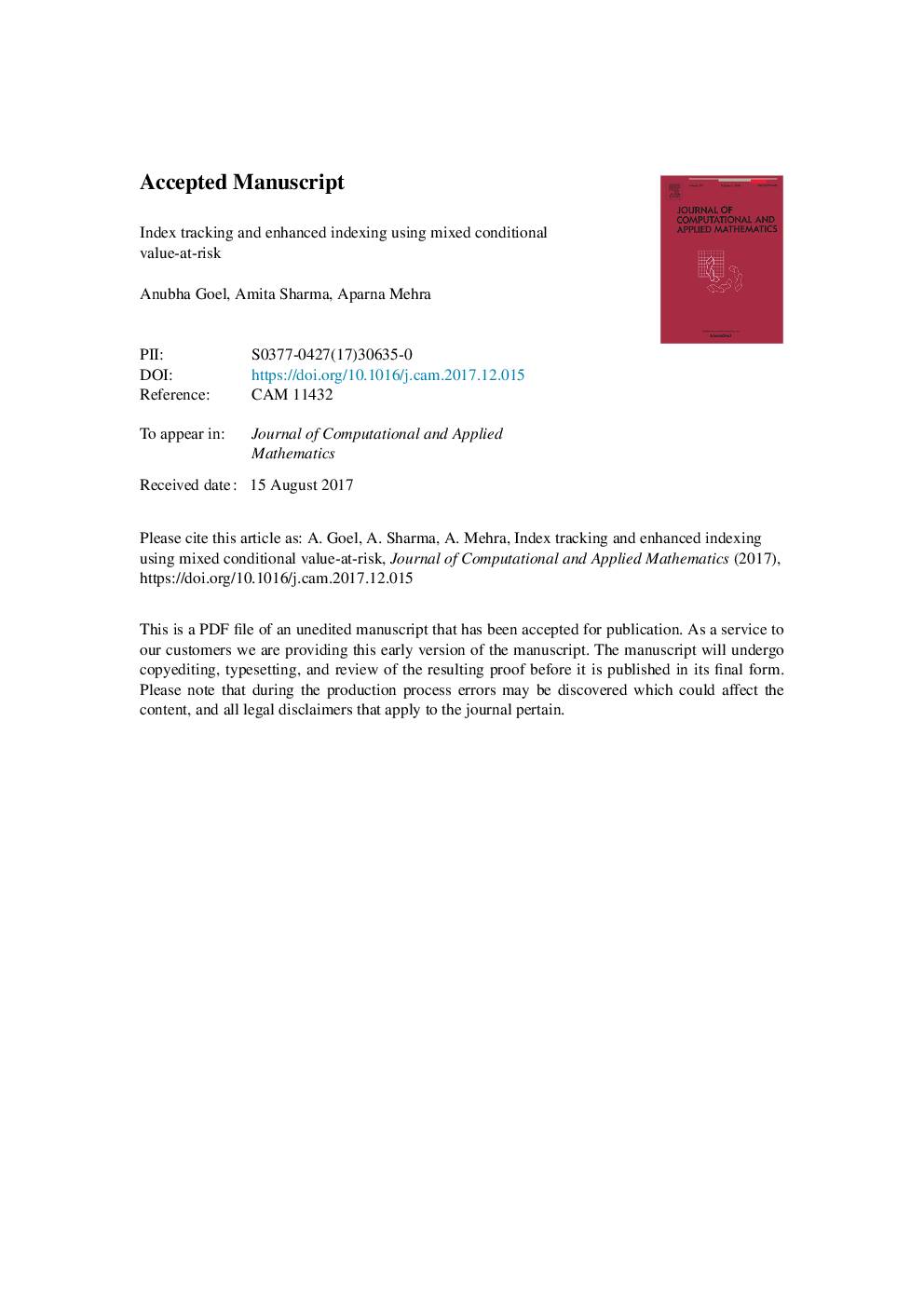ترجمه فارسی عنوان مقاله
ردیابی فهرست و شاخص های افزایش یافته با استفاده از ارزش افزوده شرطی در معرض خطر
عنوان انگلیسی
Index tracking and enhanced indexing using mixed conditional value-at-risk
| کد مقاله | سال انتشار | تعداد صفحات مقاله انگلیسی |
|---|---|---|
| 136764 | 2018 | 32 صفحه PDF |
منبع

Publisher : Elsevier - Science Direct (الزویر - ساینس دایرکت)
Journal : Journal of Computational and Applied Mathematics, Volume 335, June 2018, Pages 361-380

